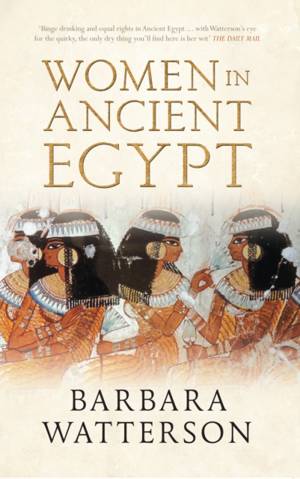
- Afhalen na 1 uur in een winkel met voorraad
- Gratis thuislevering in België vanaf € 30
- Ruim aanbod met 7 miljoen producten
- Afhalen na 1 uur in een winkel met voorraad
- Gratis thuislevering in België vanaf € 30
- Ruim aanbod met 7 miljoen producten
Zoeken
Omschrijving
The lives of Egyptian women were free of the restraints normally placed upon women in the rest of the ancient world, allowing them to exercise a full part in society, recognised as equal with men under the law. Using evidence gleaned from written records, monuments, sculpture, tombpaintings and the material found in tombs, including objects and human remains, Barbara Watterson has built up a fascinating picture of the often overlooked contributions made by women of all classes to the social, and sometimes the political, history of ancient Egypt. In Women in Ancient Egypt, the types of occupations and careers open to women are described, as are their domestic and personal lives - marriage, health and childbirth; family life; running a home; clothing, jewellery and beauty preparations. The women whose lives are fleshed out in this book are largely the 'little people' of history, women who rarely exercised any power outside the domestic sphere. In contrast, however, the final chapter deals with those women, surprisingly few in number, whose influence on the political affairs of their country was considerable and, in some cases, legendary, with a small number of royal women able to ascend the throne of Egypt and rule as female kings.
Specificaties
Betrokkenen
- Auteur(s):
- Uitgeverij:
Inhoud
- Aantal bladzijden:
- 160
- Taal:
- Engels
- Reeks:
Eigenschappen
- Productcode (EAN):
- 9781445610207
- Verschijningsdatum:
- 19/04/2013
- Uitvoering:
- Paperback
- Formaat:
- Trade paperback (VS)
- Afmetingen:
- 124 mm x 196 mm
- Gewicht:
- 199 g

Alleen bij Standaard Boekhandel
+ 27 punten op je klantenkaart van Standaard Boekhandel
Beoordelingen
We publiceren alleen reviews die voldoen aan de voorwaarden voor reviews. Bekijk onze voorwaarden voor reviews.











